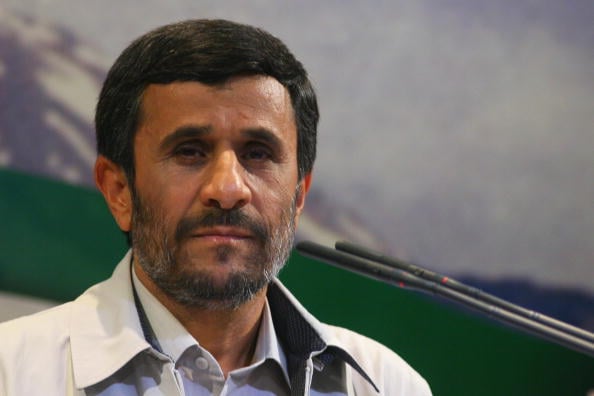Mahmoud Ahmadinejad at a Glance
- Categories: Politicians, Politicians > Presidents
- Net Worth: $5 Million
- Birthdate: Oct 28, 1956 (67 years old)
- Birthplace: Aradan
- Gender: Male
- Profession: Politician, Civil engineer, Teacher
- Nationality: Iran
- Height: 5 ft 6 in (1.68 m)
Mahmoud Ahmadinejad’s Net Worth and Controversial Legacy
Introduction: A Controversial Figure
Mahmoud Ahmadinejad, an Iranian nationalist politician, is estimated to have a net worth of $5 million. His name is often synonymous with controversy, marked by his eight years as President of Iran, from 2005 to 2013. During his time in office, Ahmadinejad was at the center of numerous international disputes and domestic policy shifts that continue to spark debate. This article delves into the life, career, and legacy of this significant, yet divisive, figure in modern Iranian history.
Early Life and Education
Born Mahmoud Sabbaghian on October 28, 1956, in Aradan, Semnan province, Iran, Ahmadinejad’s early life was marked by a move to Tehran when he was just a year old. The family name was later changed to Ahmadinejad. His father, Ahmad, was a grocer and barber, and his mother’s name was Khanom. He has two siblings, a brother named Davoud and a sister named Parvin. He excelled academically and after passing Iran’s national university examination in 1976, he enrolled at the Iran University of Science and Technology, where he studied civil engineering. He later pursued and obtained a PhD from the same institution in 1997, showcasing a commitment to education.
Career Beginnings and Early Political Roles
Ahmadinejad’s career began in the 1980s with administrative positions in West Azerbaijan, Iran. During this time, he became a member of the Office for Strengthening Unity, an organization aimed at preventing student alliances with the Mojahedin-e Khalq, a militant dissident group. His involvement with the Islamic Revolutionary Guard from 1986 to 1988 further shaped his political and ideological views. He later became a lecturer at the Iran University of Science and Technology. In the early 1990s, while pursuing his doctoral studies, he was appointed governor of the newly formed Ardabil Province, a position he held until 1997, when provincial governors were replaced following the election of President Mohammad Khatami.
Mayor of Tehran: A Shift in Ideology
Ahmadinejad’s political profile rose significantly when he was elected mayor of Tehran in 2003. During his two-year tenure, he reversed many of the reforms implemented by previous mayors, signaling a shift towards conservative religious activities. He introduced policies emphasizing charity work and the separation of the sexes in municipal offices. This period was crucial as it showcased his conservative approach and prepared the ground for his future presidential run.

Majid/Getty Images
President of Iran: Domestic and International Turmoil
In 2005, Ahmadinejad, supported by the conservative Alliance of Builders, won the Iranian presidential election with 62% of the vote in a runoff against Akbar Hashemi Rafsanjani. His presidency was marked by a controversial mix of domestic and international policies. Domestically, his government faced the highest budget deficit since the Iranian Revolution. The economy struggled while Ahmadinejad ended Iran’s birth control policies and there was a significant increase in human rights abuses. Internationally, he was heavily criticized for his antagonistic rhetoric and actions towards Israel, the United Kingdom, the United States, and other nations.
In 2009, his reelection sparked widespread protests due to disputed election results. His second term saw continued controversy, including accusations of corruption and further human rights abuses. A major power struggle erupted within the parliament, as Ahmadinejad clashed with reformers. He faced significant challenges, including being summoned by parliament to answer questions about his presidency. The subsequent parliamentary elections saw allies of Ayatollah Khamenei gain significant control. He was succeeded as president in 2013 by Hassan Rouhani.
Later Attempts at the Presidency
Following his presidency, Ahmadinejad attempted a political comeback. In 2017, he announced his intention to run for a third term, but the Guardian Council rejected his nomination. He made a second attempt to register for the 2021 presidential election, which was again denied by the Guardian Council. These rejections highlighted the complex dynamics within Iranian politics and the challenges faced by figures who have fallen out of favor with the ruling establishment.
Personal Life
Ahmadinejad’s personal life includes his marriage to Azam al-Sadat Farahi, a teacher, in 1980. They have a daughter and two sons. This aspect of his life often remains out of the spotlight, though it is an important part of his overall identity.
Conclusion: A Lasting Impact
Mahmoud Ahmadinejad’s time in office had a lasting impact on Iran and the international stage. His policies and rhetoric continue to be debated and analyzed. Whether one views him as a champion of Iranian nationalism or a source of international tension, his actions have undoubtedly left an indelible mark on the 21st century.

